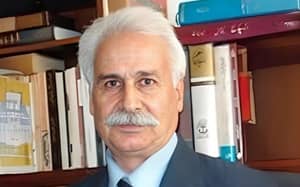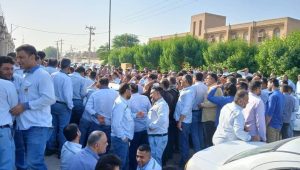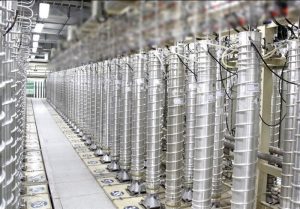
THIS PAGE WILL BE UPDATED WITH THE LATEST NEWS
UPDATE: 08:00 AM CET
Iran’s Rebellious Youth Mark November 2019 Uprising Anniversary With 24 Fiery Operations
As Iran marks the sixth anniversary of the great November 2019 uprising, which shook the foundations of the bloodthirsty religious tyranny, the nation’s rebellious youth are sending a clear message: the spirit of that uprising is alive and stronger than ever. In their fourth major campaign marking the anniversary, these brave activists carried out 24 fiery, repression-breaking operations in cities across the country, targeting the regime’s centers of suppression and symbols of its corrupt rule.
Iran’s rebellious youth mark November 2019 uprising anniversary with 24 fiery operations https://t.co/S8LNVhxH6N
— People's Mojahedin Organization of Iran (PMOI/MEK) (@Mojahedineng) November 17, 2025
Some of these operations were carried out in memory of Ahmad Baledi, a 20-year-old student from Ahvaz whose tragic death has become a new symbol of the regime’s brutal oppression. On November 2, regime agents violently destroyed his family’s legally-operated food kiosk, their only source of income. When Ahmad protested and warned that he would set himself on fire, an officer taunted him to set himself on fire. Ahmad self-immolated as a last way to have his voice and protest heard. He eventually succumbed to his injuries on November 11. His desperate act of protest has ignited a wave of public fury, exposing the systematic cruelty that pushes ordinary citizens to the brink and turning his name into a rallying cry for justice.
While The World Is Distracted, Iran Executes Critics with Impunity
Each time her phone rings, Leila* flinches. In Iran, calls from the prison sometimes come at dawn — the hour when the condemned are told to prepare. One of her close relatives is among 17 political prisoners now facing imminent execution by the Iranian regime. “Every phone call is a nightmare for me, especially in the morning. It might bring heartbreaking news,” she said from Tehran. “Every night I go to bed with the same dread of what tomorrow may bring.”
Leila is one of hundreds of family members trapped in the same vigil. Like other relatives of prisoners on death row who spoke to The Sunday Times, she did so under a pseudonym, fearing the authorities will condemn her and other family members to the hangman as well.
Qomri Abbas-Zadeh Executed in Sari Prison
At dawn on Thursday, November 13, 2025, Qomri Abbas-Zadeh, a 29-year-old female prisoner, was executed in Sari Prison, Mazandaran Province in northern Iran. Qomri Abbas-Zadeh was arrested six years ago on charges of murder and subsequently sentenced to death. Many of the women executed by the Iranian regime are themselves victims of domestic violence and discriminatory family laws. A significant number have acted in self-defense. With the execution of Qomri Abbas-zadeh in Sari Prison, the number of women executed in Iran since the beginning of 2025 has reached 53, marking an unprecedented record in the execution of women in Iran.
Five Years and Eight Months’ jail for Mohammad Banazadeh Amirkhizi
Mohammad Banazadeh Amirkhizi, an elderly political prisoner residing in Tehran, has been sentenced by Branch 28 of the Revolutionary Court, presided over by Judge Amoozadeh, to five years and eight months of imprisonment. This sentence was communicated to him following an official notice he received last week. He was arrested on 28 July 2025 (6 Mordad 1404) during a raid by security forces on his home, without the presentation of a judicial warrant, and was transferred to the Intelligence Department’s detention center in Qom. He spent weeks in solitary confinement, was denied access to a lawyer, and was released only after several months of detention on bail.
Iran: Protests by Oil Industry Workers
According to domestic media reports, oil industry workers in South Pars held protest gatherings to demand their unpaid or insufficient wages. The protesting workers stated that, despite Iran’s vast oil resources, national revenues are not being used to improve their living conditions. Local reports indicated that permanent and newly hired employees at the South Pars refineries gathered to protest low wages and unmet demands. These gatherings took place on Saturday, November 14, 2025. According to the reports, security forces dispersed the protests. In Asaluyeh, Bushehr Province, newly hired workers at the Seventh Refinery of the South Pars gas field also gathered and protested their low salaries. One of the protesters said that workers’ financial concerns were being ignored. The gatherings were described as a sign of the workers’ dissatisfaction.
Iranian Regime Deputy FM: Our Nuclear Program Is ‘Untouched’ And We Protect It
Saeed Khatibzadeh, the deputy foreign minister of Iran’s regime, stated that although U.S. and Israeli attacks have inflicted heavy damage on nuclear facilities in Iran, the regime’s nuclear program remains “untouched.” (Khatibzadeh is a senior diplomat and spokesperson of Iran’s regime; his comments were made to a foreign audience via CNN.) On Sunday, November 16, in an interview with CNN, Khatibzadeh said that Iran’s so-called peaceful nuclear program “at this moment as I speak to you, is untouched, and we will protect it.” He added that Israeli and U.S. strikes have destroyed many infrastructures, buildings, and equipment tied to nuclear activities, but the regime’s nuclear program is “completely based on indigenous knowledge” and dispersed “across our vast country.”
Rising Internal Warnings Expose the Regime’s Fear of a Social Explosion in Iran
Whatever occupies the regime’s day-to-day concerns, it inevitably surfaces through the remarks of its officials, state-aligned experts, and controlled media. These warnings, though often wrapped in cautious language, reveal a deeper reality: an entrenched fear inside the ruling establishment. The central question is no longer whether the regime is worried, but what it fears most. What force drives this persistent sense of insecurity? What is the underlying cause of this permanent state of alarm? At the heart of Iran’s political and social landscape lies an unstable relationship between society and state. Tensions—both visible and hidden—are continuous. The wider the gap between popular demands and the rigid, closed political structure, the louder the warnings in official discourse become. Even heavily censored media cannot fully conceal the tremors shaking the foundation beneath the ruling elite.







